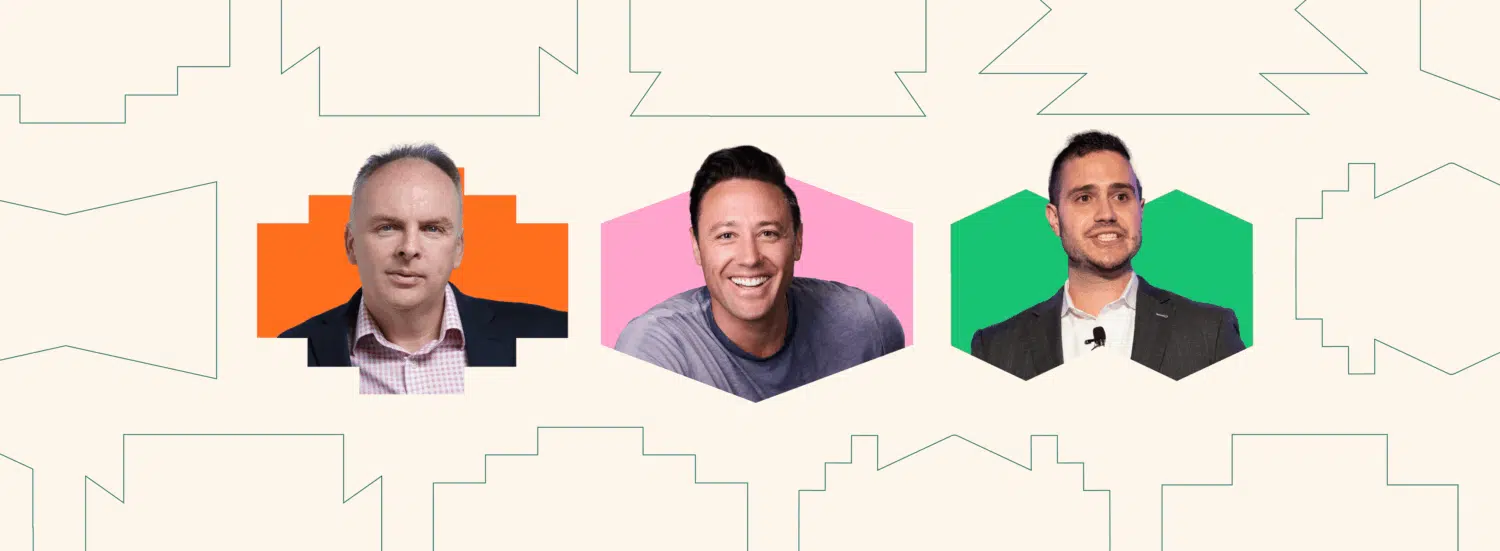The vacation rental industry’s consolidation wave is far from over. After the frenzy of 2020-2022 and the following period of market correction, 2025 has emerged as a defining year for mergers and acquisitions, with implications that will shape the industry for the next three to five years.
At GuestyVal 2025, three M&A experts shared hard-won insights from opposite sides of the negotiating table. Jacobie Olin of C2G Advisors moderated a frank discussion with Will Creedon, founder of Alloggio, and Sean Breuner, CEO and founder of AvantStay. Between them, they’ve completed over 65 acquisitions across multiple continents and market segments.
Watch the full session here.
The buyer’s market has arrived
The market dynamics have shifted dramatically. From 2020 through the first half of 2022, sellers held the leverage. Capital flooded the sector, demand surged post-COVID, and valuations reached unprecedented heights. But the party didn’t last.
“2020 to 2022 and a half was a seller’s time,” Creedon said. “Now, it’s a buyer’s time. And it’s a buyer’s time for the next two hundred weeks. Those that want to sell need to be thinking about that. You need to psychologically get in the right place.”
The correction began in late 2022 as interest rates climbed from near-zero to over 5%. The resulting uncertainty froze deal activity throughout 2023 and much of 2024, as sellers clung to inflated expectations while buyers demanded proof of sustainable performance.
But 2025 has seen a dramatic resurgence. Major transactions this year include Casago taking Vacasa private, Ares Capital investing in AwayDay, Calera purchasing Nocturne, VTrips seeking a recapitalization, and Garnet Station Partners entering the market with StayTerra. Each of these buyers needs to triple to quintuple their investment within three to five years — meaning more acquisitions are inevitable.
Critically, every major deal also left 20 unsuccessful bidders now hunting for their first platform acquisition. The capital is ready. The appetite is strong. What buyers are seeking, however, has fundamentally changed.
What buyers actually want
Both Creedon and Breuner emphasized they’re not buying businesses — they’re buying relationships, local authority, and growth potential wrapped in sustainable operations.
For AvantStay, which manages 2,500 luxury homes across 160 cities, generating roughly $7 billion in assets under management, the ideal seller operates in high-ADR, drive-to luxury markets within the United States. Breuner’s team has completed 21-22 acquisitions over the past five years, primarily structured as earn-outs rather than simple cash exits.
“We do not want the buy and fly seller,” Breuner said. “We want somebody to say, ‘I’ve hit 75 or 100 properties, and we’re doing really well. We’re 4.8+ rated across all these different OTAs, but I think we can go get another hundred properties. I just can’t do it while I’m operating on a day-to-day basis.”
Selling your business and retiring to Cabo the next day is a sweet deal, but it’s bad business for the buyer, Breuner said. “This business obviously has embedded relationships that are critically important to the success of these companies.”
Alloggio, which operates 15 hotels and 3,500 units across Australia and New Zealand and has completed 45-46 acquisitions, takes an even more surgical approach. Creedon focuses on specific geographic corridors, seeking operators who’ve built genuine community relationships and demonstrable trust with local regulators.
“We’re buying your loyalty and trust and goodwill that you and your team have built with your owners,” Creedon said. “We need to know it’s going to be there for weeks and years ahead.”
The brutal truth about valuations
The valuation spectrum in vacation rental M&A is extraordinarily wide, and understanding where your business falls requires brutal honesty about scale, sophistication, and market position.
Small tuck-in acquisitions with strong local operators might fetch one to two times EBITDA (earnings before interest, taxes, depreciation, and amortization). Regional operators with proven infrastructure typically command two to five times EBITDA. Only at the national level, with sophisticated accounting systems, proven technology platforms, and demonstrable competitive advantages, do multiples reach the high teens.
In Australia and New Zealand, Creedon noted, multiples remain compressed at 2.7 to 3.4 times EBITDA — but only for businesses that are genuinely profitable and won’t require expensive integration work.
The hard reality: if you manage 50 properties and expect a nine or ten times multiple because you read about a major acquisition, you’re setting yourself up for disappointment. Scale matters. Professionalism matters. And most critically, trajectory matters more than current margins.
According to Breuner, seeing the unit count increase means you have low churn, which means you have a good product. “We can always optimize the margins,” he said.
The integration challenge
Both buyers stressed that successful transactions require far more than financial due diligence. The hardest work begins after the deal closes.
Creedon outlined three non-negotiables during due diligence:
First, demonstrate you’ve built relationships with local governments and regulators. Regulatory risk represents the industry’s greatest threat over the next five to ten years, and buyers need confidence you’ve laid the groundwork to navigate whatever comes.
Second, eliminate key person risk. If you get sick or die tomorrow, who runs the business? Have you built a team that can survive your absence? Buyers are purchasing your relationships and local credibility , but they need those assets to outlast you personally.
Third, get your accounting dialed in. Both buyers mentioned trust accounting as a particular focus area. “None of us wants to go to jail,” Creedon said. Clean financials aren’t just nice to have — they’re the entry fee to serious conversations.
What to do today
For operators considering a potential exit in the next two to five years, the message was clear: start preparing now.
Build your team. Creedon urged operators to think of their business as a bus, with each team member occupying a seat. Are they in the right seat? Are some seats blocking your way forward? “Sometimes you have to say goodbye to team members because they’re actually holding you back,” he said. This process takes 50-75 weeks of honest evaluation, but it dramatically increases your attractiveness to acquirers and reduces their integration costs.
Focus on growth over margins. Counter-intuitively, being too good operationally can actually reduce your appeal. If you’re already operating at 15% EBITDA margins, there’s less room for sophisticated buyers to add value. Show consistent unit growth with reasonable margins, and let the buyer optimize from there.
Maintain energy for the journey ahead. Both buyers emphasized they want founders who still have gas in the tank; people who love business development and building relationships but are exhausted by operational complexity. The ideal structure allows you to refocus on what energizes you (typically owner acquisition and community building) while offloading what drains you (operations, accounting, technology management).
Get psychologically ready. Perhaps most importantly, accept that this is a buyer’s market. The inflated valuations of 2021 aren’t coming back. Interest rate uncertainty has given way to relative stability, but that stability favors buyers, not sellers.
The long view
The vacation rental industry is maturing. The public market “clearing” of underperforming companies like Vacasa going private has removed the depressing comparables that plagued the sector. Private equity and venture capital are returning with multi-year horizons and patient capital.
The businesses that will command premium valuations aren’t those chasing short-term profits or clinging to outdated operating models. They’re the ones building sustainable competitive advantages through technology, team development, regulatory relationships, and proven growth trajectories.
For operators with 10-200 properties who’ve spent years building something special in their local markets, the opportunity to partner with sophisticated buyers has never been more accessible. But it requires clear-eyed assessment of where you truly excel, honest acknowledgment of your limitations, and willingness to stay invested in the outcome for years, not months.
The consolidation wave will continue for at least the next three to five years, according to experts. The question isn’t whether your market will see M&A activity — it’s whether you’ll be ready when opportunity knocks.




